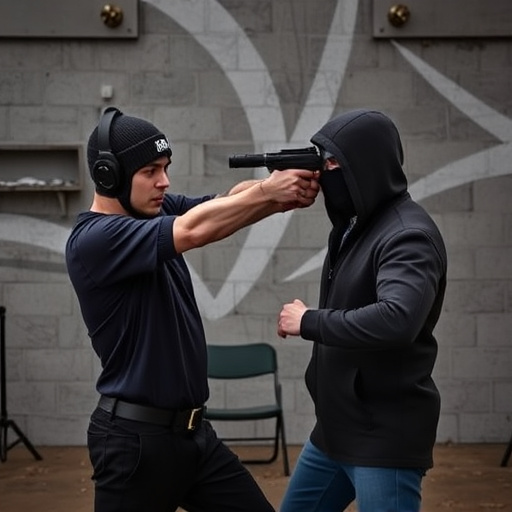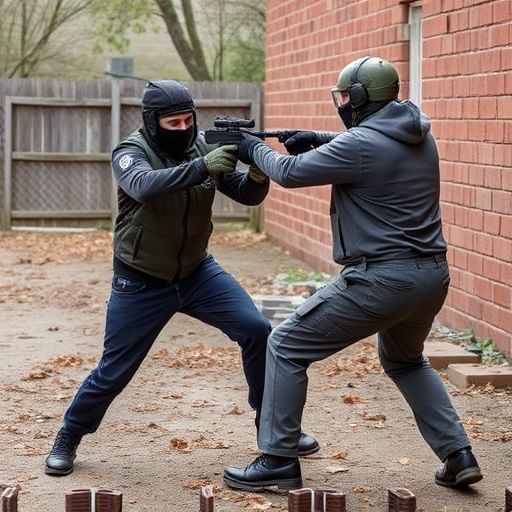Stun guns operate within 50,000-150,000 volt range to temporarily incapacitate targets by disrupting nervous system. Understanding their effects on neural communication causes muscle paralysis and sensory disruption. Safe deployment involves adhering to guidelines: aim for center of body, avoid vital areas, stay within device's range (2-15 feet), and regularly inspect for damage.
“Uncover the essential safety aspects of stun guns, especially their voltage range. This comprehensive guide delves into the key specifications that define their performance. From understanding the impact of stun guns on the nervous system to implementing critical safety measures, we demystify these powerful personal defense tools. Learn how different voltage ranges affect stun gun effectiveness and discover best practices for safe usage. Stay informed and empowered with this essential knowledge on stun gun effects on the nervous system.”
- Stun Gun Voltage Range: Key Specifications
- Understanding Stun Gun Effects on Nervous System
- Safety Measures When Using Stun Guns
Stun Gun Voltage Range: Key Specifications

Stun guns are designed to temporarily incapacitate a target through a powerful electrical shock, aiming to disrupt the nervous system’s function. The voltage range is a critical specification, as it determines the stun gun’s effectiveness and safety features. Typically, stun guns operate within a specific voltage range, usually between 50,000 to 150,000 volts. This high voltage ensures that the stun gun can deliver a powerful jolt, capable of causing muscle contractions and disorientation in the target, thus providing a temporary defense mechanism.
The key is to strike a balance—high enough voltage to be effective against various physical builds but not so high as to pose unnecessary risks or cause severe harm. Safety features, such as automatic shut-off mechanisms and adjustable output levels, are essential to ensure users can control the intensity of the shock while minimizing the potential for accidental injury. These specifications are vital in ensuring stun guns remain a reliable and safe personal defense tool.
Understanding Stun Gun Effects on Nervous System

Safety Measures When Using Stun Guns

When using a stun gun, safety measures are paramount. These devices operate by delivering an electric shock to disrupt the nervous system, causing the target to experience muscle paralysis and disorientation (Stun Gun Effects on Nervous System). To ensure user safety, it’s crucial to follow specific guidelines. Always aim for the center of the body, avoiding sensitive areas like the eyes or neck, as this can lead to severe injury or even death. Additionally, be mindful of surrounding individuals; do not point the device at anyone unintended, as unexpected shocks could cause panic or physical harm.
Proper training and understanding of stun gun functionality are essential. Familiarize yourself with the device’s range, which typically varies from 2 to 15 feet, depending on the model. Stay within this range to guarantee effective deployment without increasing safety risks. Regularly inspect your stun gun for any signs of damage or malfunction, ensuring it’s always in optimal working condition. These precautions contribute to responsible use and minimize potential adverse effects, both on the target and bystanders.
When considering a stun gun, understanding its voltage range and safety specs is crucial. By grasping the impact of stun guns on the nervous system, users can ensure their safety and effectiveness in self-defense scenarios. Remember that proper handling and knowledge of these devices are essential to maximize their benefits while mitigating potential risks.
